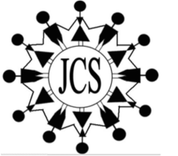The People We Work With and The Area They Inhabit

The Garasiya, Bhil and Gameti tribes inhabit a prominent geographical area of south-western Rajasthan; with villages and settlements primarily in forests of the hills and foothills of Aravali range. These tribes have an ancient, rich and vibrant culture that informs interpersonal relations and their relationship with nature. The community does not live in concentrated clusters, but is scattered with some households having several kilometers between them. They practice agriculture primarily for subsistence and largely depend upon forests for their day-to-day and livelihood needs. Status of literacy and education is steadily improving with girls and women taking an equal advantage of available opportunities. A lot of families migrate to nearby towns and the bordering state of Gujarat in search of labor and return to their villages during cropping months. Tribal women equally share the household economy, and in some cases also earn up to 75% of the family’s income. She is involved in the collection of forest produce and selling it in nearby markets. The woman is also the one who is cultivating the fields and tending to the crops and looking after the harvest, but lacks any formal rights over farm-land, the resources, or decision-making powers around it. Our experience has shown that tribal women, although oppressed and exploited, contain within themselves tremendous sources of strength and fortitude. All that is required is an acceptance of their potential through a little support and available opportunities for their development a24role-holders.
This region of South-West Rajasthan is surrounded by the rugged Aravali hills. The undulating landscape of this region has resulted in sparse tribal settlements. A significant portion of the land, around 65%, is designated as forested land. Traditionally, forests have been the primary source of livelihoods for tribal communities. However, due to a decline in forest cover overtime, agriculture is gradually becoming the predominant occupation. This shift towards agriculture is hindered by challenges such as fragmented land ownership, limited rainfall, inadequate irrigation facilities, suboptimal farming techniques, and the degradation of agricultural land. Depletion of natural resources and practice of subsistence agriculture due to a combination of factors over a period of time has severely affected the livelihood system of tribal people. During the last few decades, the community in large numbers has been forced out of the forests with a looming threat of more evictions and encroachment upon forest land. Even more concerning is the loss of identity and knowledge that inevitably comes from disconnecting people from nature. Also, large segments of the tribal population were integrated into the market economy through appropriation of their lands as well as their labor in commercial forestry, mines and plantations. Over the years, changing circumstances have led many to assume different roles in lives to fulfill their livelihood needs. This has resulted in a gradual disconnect in their identity and role as forest-protectors. As a result, they are mostly forced to work as daily wage earners in urban areas across Rajasthan or have to migrate out to other states in search of work. Unfortunately, these migrants often face exploitation, working long hours for minimal wages. As the community is not a skilled community because of traditional occupations; they are not able to cope up in the changing socio-economic scenario and are struggling for survival. The major reasons behind their powerlessness and vulnerability is that they don't have the appropriate skills, the required resources; financial and educational, to lead a life of dignity. Among those that are most affe24ed by exploitative situations are women.
The geographical area inhabited by the community is some of the most densely covered forest areas of the Aravali hills. These hills are rich in natural resources and they have been respectfully protected by the Adivasis. But with mining, industries, highways, encroachments for luxury settlements, and ignorant and negligent laws and policies, these resources face major threats. Even though indigenous communities such as these have not been direct contributors to climate change as we are experiencing today, they are some of the worst impacted groups due to their marginalized nature and lack of economic resources to access commodities. It is imperative that the people remain aware and empowered in order to fight exploitation and to ensure strong, self-sustaining, empowered communities. Over the years there has been an increased representation of women in local self-governance, an increase in youth and female leadership and independent entrepreneurial tribal women, and therefore it is important to actively work with and capacitate them. Tribals have always had their natural ways of dealing with each season’s hardships with ease for hundreds of years if not more. Only in the past few decades, encroachment of land, agriculture and modernisation of tribal areas has led to a severe loss of cultural knowledge resulting in climatic imbalances. The chain in environmental balance certainly doesn’t start at the forest level settlers in terms of damage done but is most definitely the first place of impact when it comes to the damage dealt with.
